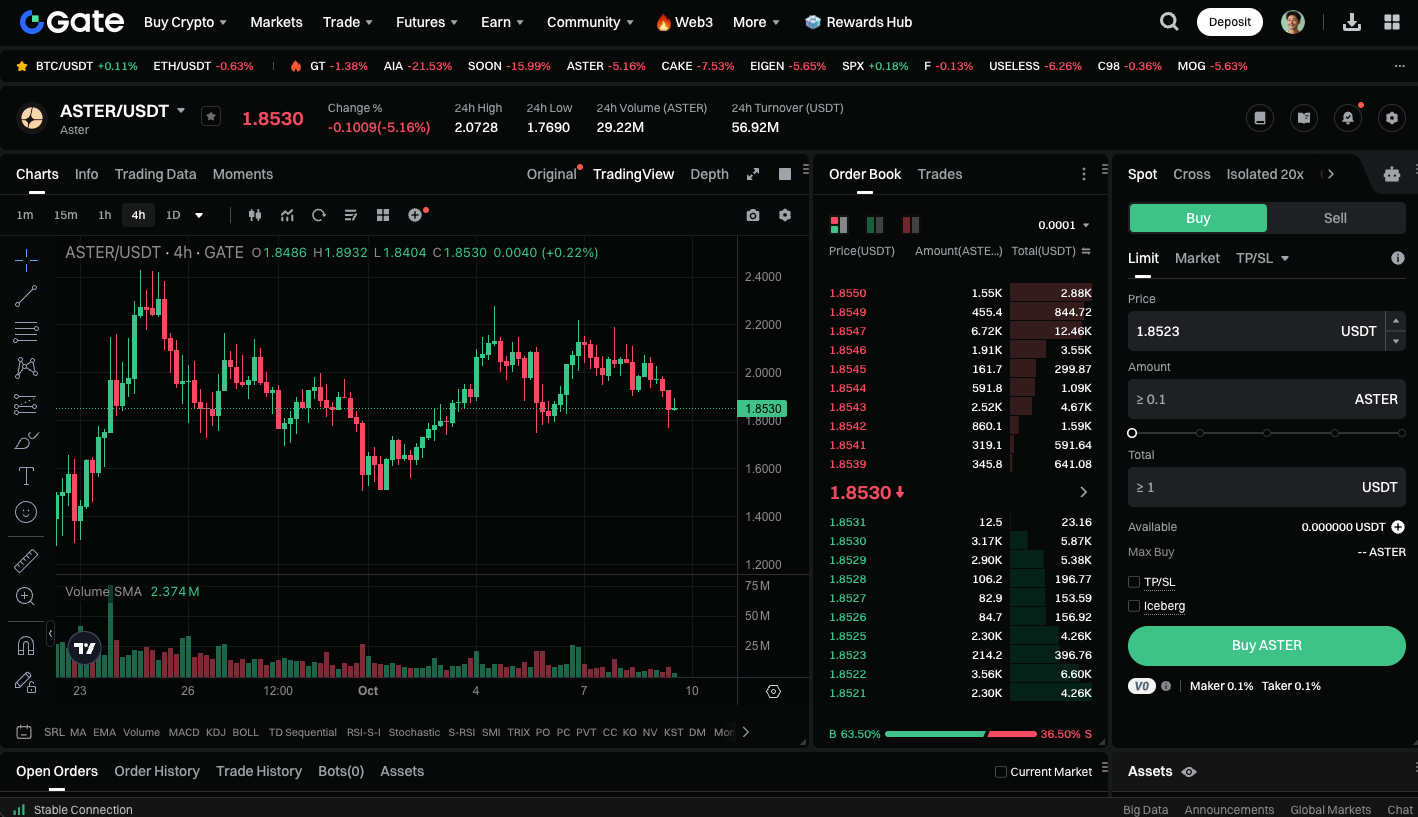什么是 Pipe Network (PIPE)?
Pipe Network 是什么?

(来源:pipenetwork)
Pipe Network 是一个建立在 Solana 区块链之上的去中心化全栈云端基础设施,透过全球分布的超本地化 PoP(Points of Presence)节点网格,实现高速、低延迟、无需许可(permissionless)的内容分发与资料储存。
Pipe 的理念很简单但强大:不依赖巨型资料中心,而是让网路由社群共同运作。每一个节点、每一个 ISP 设施,甚至社区运营的 PoP 都可以成为 Pipe 的一部分,意味著用户可以在距离不到 50 英里的节点获取资料,达到接近区域网(LAN)的传输速度。
Pipe 的核心创新
传统的 CDN(例如 Cloudflare、AWS CloudFront)通常只在全球几十个大城市布点,Pipe 则彻底颠覆这一模式,采取超本地化节点策略,在每个网路边缘布署 PoP 节点。这些节点可能设置在:
网际网路交换中心(IXP);
当地 ISP 的机房;
或者由社群自行营运的地区节点。
Pipe PoP 的优势:
极低延迟:平均延迟低于 10 毫秒,接近区域网速度。
高吞吐效能:因资料传输距离短,大幅降低 BDP(Bandwidth-Delay Product)。
弹性与容错性:动态绕过壅塞路由,避免单点故障。
普及性:覆盖传统云端服务未触及的乡村或偏远地区。
Pipe Network 的愿景是让资料传递真正贴近使用者,让任何一个地区都能享有高品质的内容分发能力。
Pipe 的产品生态
Pipe Network 并不只是单一协议,而是一整套由底层基础设施构成的 Web3 云端堆叠(full stack cloud)。它提供三大核心产品模组:
Pipe CDN
基于超本地化 PoP 网格打造的内容分发网路,特别适用于 影音串流、游戏、dApp 与 AI 工作负载。Pipe CDN 让内容从离使用者最近的节点传出,实现真正的即时体验。Firestarter Storage
这是一套去中心化的原始储存层(origin storage),与 CDN 紧密整合,支援高冗馀与防篡改的内容管理,透过区块链验证内容真实性,确保资料传输与储存全程可追溯。P1 Overlay Network
Pipe 的软体定义路由层,用以动态选择多网路间的最优传输路径,让 Pipe 能跨不同 ISP、自动选择最低延迟与最高带宽的路径进行资料传输。
Pipe Network 的关键特点
超本地化节点部署(Hyperlocal PoPs)
PoP 节点可在任意区域建立,不受集中式云端地理限制,让开发者与使用者都能获得更接近的资料来源,这样的架构让 Pipe 能在偏远地区也达成接近即时的内容传递。成本效益高(Cost Efficiency)
Pipe 采用 Burn-Mint 平衡模型(Burn-Mint Equilibrium),使用者仅为实际使用的频宽与储存付费,每次传输都会消耗 Data Credits,由 PIPE 代币燃烧而得。这样的模式消除了传统 CDN 的固定成本与订阅制束缚。即时传输能力(Real-Time Data Delivery)
Pipe 透过区域节点距离优势,提供比集中式伺服器更低的延迟,非常适合即时通讯、直播、以及需要高频互动的 Web3 游戏与 AI 应用。安全与完整性(Security & Data Integrity)
Pipe 内建一系列安全机制:
- DDoS 防护:自动抵御分散式阻断攻击。
- DMCA 投诉系统:协助用户管理内容下架与版权维护。
- IP 白名单:可自定义存取权限,防止未授权请求。
这些设计确保 Pipe 的网路在去中心化环境下仍具企业级安全性。
去中心化扩展性与节点激励
Pipe 的扩展方式并非传统云端那种加伺服器的模式,而是透过 permissionless node participation(无需许可的节点贡献) 来实现,任何人都可以运行 PoP 节点,并根据节点所处地区的资源稀缺程度获得相对应的回报。意味著:
节点越靠近未被服务的区域,奖励越高;
整个网路能自然扩张至全球,而非依靠中心化公司部署。
Pipe 的奖励模型建立在 Proof-of-Useful-Work(有用工作量证明)上,节点必须提供实际的频宽与储存能力,才有资格获取 PIPE 激励,让 Pipe 成为真正结合效能、经济激励与社群共治 的分散式网路。
代币经济学
Pipe Network 的原生代币为 $PIPE,部署于 Solana 链(SPL 标准),同时具备治理、质押、支付与网路激励功能。
基本资讯
总供应量:1,000,000,000 PIPE
共识模型:Proof-of-Useful-Work(PoUW)
支付模式:可直接支付 PIPE 或燃烧 PIPE 以换取 Data Credits
质押机制:单一质押池(Staking Pool),质押 PIPE 以获得 LovePIPE(非复利型 LST)
治理方式:PIPE 持有者可进行具约束力的投票,节点的信号投票仅具建议性。
代币分配
Pipe 采取以社群与长期可持续性为导向的分配结构,具体如下:
社群分配(Community)——22%:用于激励早期用户、建设者及行动任务,推动 Pipe 生态的基础共识。
策略投资者(Strategic Investors)——32.34%:支持项目的早期融资与市场推广,提供长期资金与技术合作。
核心团队与实验室(Core Contributors & Labs)——15.67%:用于研发与技术维护,确保 Pipe 长期稳定发展。
生态与金库(Ecosystem & Treasury)——19.99%:支持合作伙伴、开发补助与流动性配置,是 Pipe 成长的战略资金池。
节点运营者(Node Operators)——10%:作为网路维运与效能贡献的主要奖励来源。
释放机制
投资者代币:TGE 后 1 年解锁;团队代币:2 年解锁,含 1 年 Cliff,之后线性释放;其他类别依据最终 TGE 公告确定。
代币用途
PIPE 不仅仅是一个治理代币,而是整个 Pipe 经济运作的燃料:
治理投票:参与网路参数与资金配置决策。
支付与燃烧:用于购买频宽、储存与资料传输额度。
质押激励:透过 LovePIPE 参与网路收益。
节点抵押:运行 PoP 节点所需的基本抵押资产。
这使 PIPE 成为整个 Pipe Network 的价值锚点,连结使用者、节点与开发者。
即刻开始进行 PIPE 现货交易:https://www.gate.com/trade/PIPE_USDT

总结
Pipe Network 的诞生,不只是要分散化 CDN,而是要重构整个资料分发的基础设计哲学。在这个速度为王的时代,Pipe 让资料传递变得更近、更快、更公平,它不是建立更多中心,而是消除中心,让每一个节点都成为云的一部分。
相关文章

Gate BTC 挖矿:质押 BTC,轻松每日赚取链上收益


ETF 助力 Nasdaq Turns Positive in 2025:捕捉科技浪潮红利

2025 年房屋税新政全面解析 — 政策变化与纳税人应对策略

纳斯达克 100 指数最新动态与投资策略
